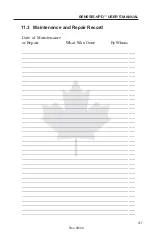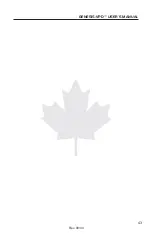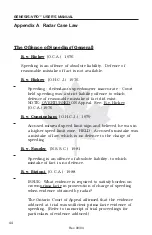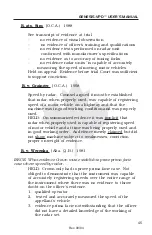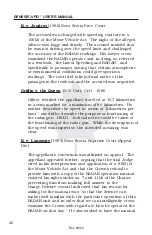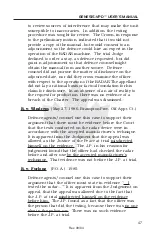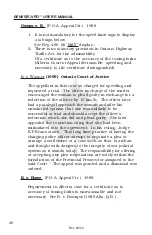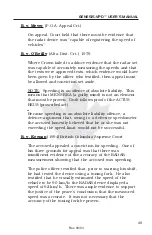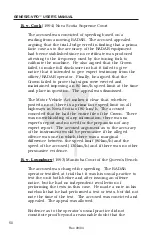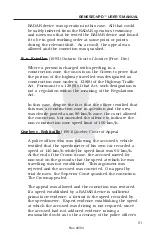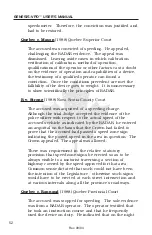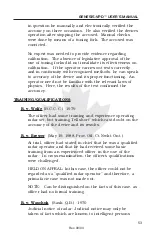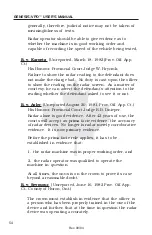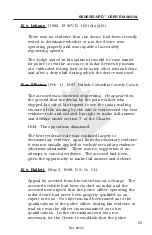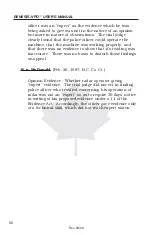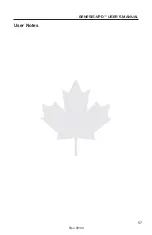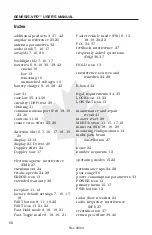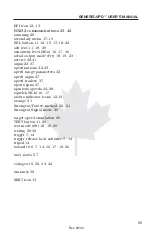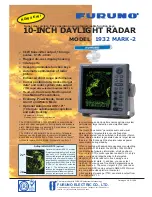
GENESIS-VPD™ USER’S MANUAL
55
Rev. 09/04
R. v. Lehane
(1982, 15 M.V.R. 160 (Ata Q.B.)
There was no evidence that the device had been recently
tested to determine whether or not the device was
operating properly and was capable of accurately
registering speeds.
The Judge stated in his opinion it would be easy matter
for police to test the accuracy of radar devices by means
of a calibrated tuning fork or by some other means before
and after a duty shift during which the device was used.
R. v. Ellision
(Feb. 11, 1987, British Columbia County Court)
The accused was convicted of speeding. He appealed on
the ground that the denial by the police officer who
stopped his car of his request to see the radar reading
erasure of the reading by the officer contravened the best
evidence rule and violated his right to make full answer
and defence under section 7. of the Charter.
Held - The appeal was dismissed.
The best evidence rule was confined largely to
documentary evidence; apart from documentary evidence
it was not usually applied to exclude secondary evidence
otherwise admissible. There was no suggestion of an
attempt to conceal evidence. The accused had been
given the opportunity to make full answer and defence.
R. v. Hallett
(May 3, 1988, N.S. Co. Ct.)
Appeal by accused from his conviction on a charge. The
accused’s vehicle had been clocked on radar and the
accused now argued that the police officer operating the
radar device had never been properly qualified as an
expert to do so - No objection had been raised as to the
qualifications of the police officer during his evidence at
trial nor was the officer cross-examined as to his
qualifications. In the circumstances it was not
necessary for the Crown to establish that the police

